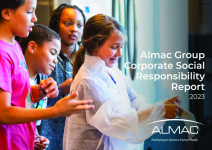Elligo: increasing diversity can elevate trials

Outsourcing-Pharma (OSP) recently talked with Faith Holmes, medical director of Elligo Health Research, about diversity in clinical trials, and what research teams can do to improve their outreach, recruitment and participation.
OSP: What do we mean by “diversity” when we talk about clinical research?
FH: Diversity in terms of clinical trials speaks to the intent of clinical trials to execute a study with a population which will be reflective of the ultimate end user population for the investigational product, diagnostic tool, or device. The composition of a population displays diversity across elements of age, sex, race/ethnicity, socioeconomic status, and geographic distribution.
Beyond the genetics of age and race/ethnicity, within the latter two categories are further subgroups which inform nutrition/diet, occupation, exposures environmentally and to other persons, living conditions, etc. These factors can potentially have an effect on the pharmacokinetics and pharmacodynamics of an investigational product.
Yet another element of the diversity question relates to medical comorbidities a patient may have which can impact their life as it relates to study participation, mechanically, but in addition can lead to exclusion from trials due to concern for AEs. This does not keep in mind the fact that in real world medical practice these products will be often used in these populations without the benefit of the controlled setting of a clinical trial to facilitate gathering data to inform later use.
OSP: What are some of the ways and areas in which trial teams tend to fall short in reaching out to and recruiting patients from diverse populations?
FH: Clinical trial enrollment being offered in locations and at times of day/days of week which preclude access for many potentially eligible patients.
Lack of access to informed consents, brochures, advertising, and personnel conducting the study who are able to communicate in a potential participant’s native language.
Not having personnel conducting the study who are either a member of the patient’s self-identified cultural context or who at least have a breadth of cultural awareness.
OSP: Why is obtaining diversity in a trial’s patient population important? How does it benefit the site, sponsor, patients themselves, and other stakeholders?
FH: The fact that there are so many variables which can have an effect on therapeutic response, efficacy, safety, adverse events of a given IP … it is important to identify those variables to ultimately shape clinical practice guidelines for prescribing physicians.
Provide all patients with equal opportunity to contribute to scientific knowledge. The site and PI have the opportunity to be involved with the scientific process and their involvement in clinical trials can set their practice apart in the eyes of patients.
The opportunity to bring the availability of clinical trial options to patients particularly for those disease processes for which we do not yet have good conclusions can be a factor in professional satisfaction, combat burnout, and a factor in recruitment of physicians to a practice.
The fact that inclusion/exclusion criteria in many trials exclude those with a list of what are often common disease processes and comorbidities in the intended use population deprives those patients of the opportunity to participate and thereby deprives the sponsors of the knowledge it would provide. (There would need to be a robust educational process with that to ensure that such patients would have an understanding of the higher potential for SAEs, and protocols in place to reassure sponsors that there would not be repercussions if due diligence was followed.)
OSP: How does the FDA guidance seek to bridge that gap? Do you feel it is an effective solution?
FH: Reference the FDA 2019 guidance : Enhancing the Diversity of Clinical Trial Populations – Eligibility Criteria, Enrollment Practices, and Trial Designs Guidance for Industry.
Lots has been said about adequacy of guidance to effect solutions.
OSP: As you point out, EHR data can help identify patients, but how might such a resource fall short?
FH: The typical practice will ask as a routine part of establishing a patient with the practice, questions which include elements of diversity as a part of demographic intake and the social history. Many patients decline to supply information related to race/ethnicity for various reasons; these reasons can include fear related to political factors and a lack of options to choose from which they feel accurately describes how they self-identify.
For social history (occupation, living conditions, potential exposures, etc.) these elements are often not included in the EHR as structured data that is readily query-able, making it more labor intensive to identify these groups.
OSP: Could you please share some of the solutions Elligo Health Research has developed and put to work to help increase participation/representation of underrepresented populations?
FH: Creation of targeted patient engagement materials to provide a variety of options for use with the practice with appeal to diverse populations and accessible via a variety of methods.
Partnering with community practices in inner city locations where research is otherwise not accessible. Facilitating the research being conducted within the context of their established physician/patient relationship, which is a particularly relevant factor for minority populations.
Providing the infrastructure, administrative, and staffing support to practices that would not otherwise be able to provide research as a care option to their population.
Offering decentralized trial opportunities brings even broader access to trial participation.
OSP: Specifically, how can community physicians help clinical research teams make the connection with such patient populations?
FH: Given the fact that community practices are embedded in a community, they are often keenly aware of the chains of communication and trust within that community. This can facilitate better targeting of outreach and access to those who can inform decisions around both recruitment and retainment issues: community gathering places, local leaders, health care advocates who have the ear of the family decision-makers.
Community physicians are often a part of or contributors to advocacy groups and can serve as a conduit to bring the message of trials to these groups for distribution verbally among their members.
Physicians can help by being willing to participate not only in those trials which involve large cohorts of patients, but those trials involving rare diseases, for which there may be a very low enrollment, and thereby be a part of the solution for this in-need population.















